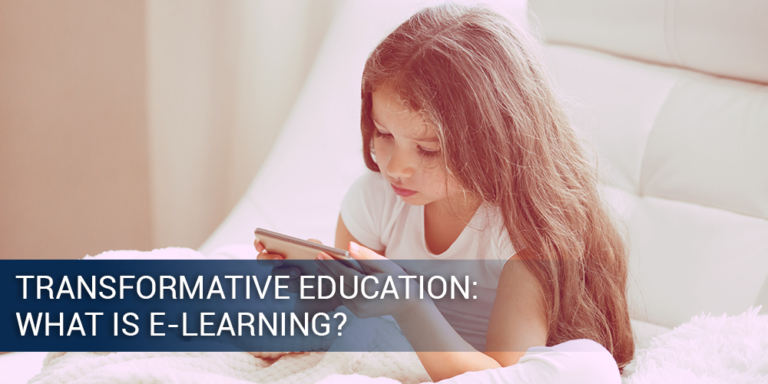Digital revolution has impacted almost each area through which the world operates, and the area of education is not untouched. Whether it is the matter of saving travel costs for trainers or making training more formal and consistent, e-learning comes as a boon to the industry. Now the prime question is: what exactly e-learning is. In prescribed terms, e-learning is defined as a learning system that uses electronic resources and is based on formalized teaching.
While some of us would argue that it lacks the human touch, but its extensive set of attributes overshadows that ailment as well. In some cases, certainly, it is not a replacement of the conventional classroom experience that requires core trainers’ interactivity. However, in most of the cases, it turns out to be an effective and supportive learning mode that enables network-enabled knowledge and skills transfer to various recipients across the world.
Also known as online training or web-based training, e-learning has completely revolutionized the way education used to be imparted, especially for corporates. Here are some of the benefits that would support this fact:
- Flexibility: Out of many features offered by this learning mode, flexibility leads its way to the top. Learners can learn at any place, from anywhere, and at any time and that’s the beauty of e-learning.
- Consistency: Unlike multiple classroom sessions with varying equipment and conditions, an e-learning course delivers the same message each time it is run. The result is consistent learning across all level of learners.
- High Retention: Through the blended approach (a combination of classroom training and online training), it has been proven that learners have a high retention rate. Learning designers use this mode tactfully for giving baseline knowledge that can be gained outside classroom lessons. This further maximizes the learners’ focus on simulations, role plays, and other interactive sessions in classrooms.
- Reduced Cost: E-learning relieves the pain and hence the cost of logistics, material and travel needed for arranging classroom sessions.
- Scalable and Manageable: While e-learning still needs educators to record their sessions and/or create courses, these materials can be easily scaled up or down as and when needed. Moreover, they can be easily managed through a centralized Learning Management System (LMS).
- Device Compatibility: The smart e-learning systems are made to be compatible to run on a smartphone, tablet, and computers, all at a same time. What used to be confined to classrooms, is now accessible even from a plane or train.
- Personalized Learning Experience: E-learnings can be customised to fit to individual needs through a self-paced environment. Moreover, with the aid of branching scenarios, learners can be allowed to select a specific real-time role or confidence level, and hence the level of education.
- Measurable: When learners go through e-learning modules, it can be tracked. Educators can further use this data to enhance their design strategies and measure the business impact.
- Unintimidating: For some shy learners, the classroom environment can be intimidating, holding them back to ask questions. E-learning not only overcomes this drawback, but also provides a chance to learn without any fear of failure.
- Less Carbon Footprint: Last but not the least, with this paper-free training mode, companies can significantly reduce their carbon footprint.
The bottom line is that e-learning offers immense opportunities for learners to learn in a carefree and flexible environment. While classroom sessions might hold their existence, no one can deny the upcoming and bright future of this digital mode of learning.



